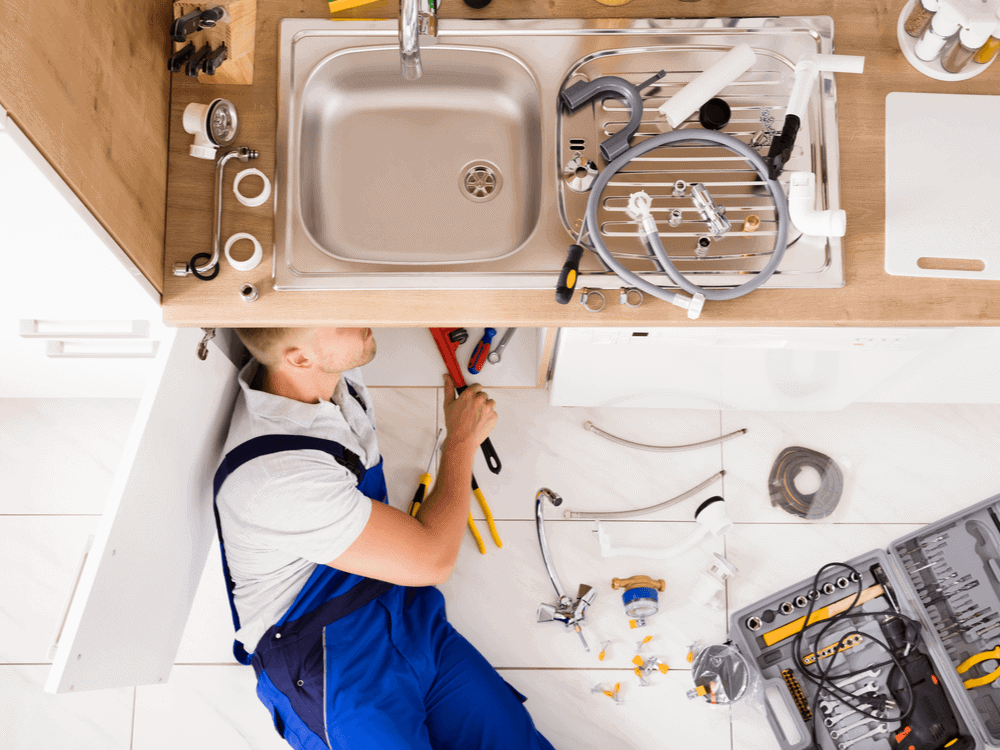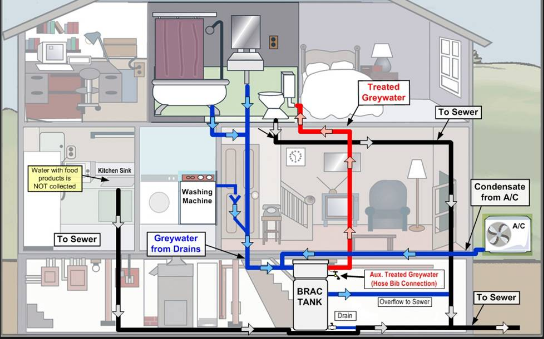Key Information About Your Home's Plumbing System Anatomy
Key Information About Your Home's Plumbing System Anatomy
Blog Article
We've noticed this article about Anatomy of a House: Understanding the Components down the page on the web and accepted it made sense to share it with you in this article.

Recognizing just how your home's plumbing system works is necessary for every single house owner. From providing clean water for alcohol consumption, food preparation, and showering to safely eliminating wastewater, a well-kept plumbing system is critical for your family members's health and wellness and convenience. In this detailed overview, we'll check out the complex network that composes your home's pipes and offer suggestions on maintenance, upgrades, and taking care of common problems.
Introduction
Your home's plumbing system is greater than simply a network of pipelines; it's a complex system that guarantees you have accessibility to clean water and reliable wastewater elimination. Understanding its elements and how they work together can help you avoid pricey fixings and make sure whatever runs smoothly.
Fundamental Components of a Plumbing System
Pipelines and Tubing
At the heart of your plumbing system are the pipelines and tubing that lug water throughout your home. These can be made of different materials such as copper, PVC, or PEX, each with its benefits in terms of resilience and cost-effectiveness.
Components: Sinks, Toilets, Showers, etc.
Components like sinks, bathrooms, showers, and bathtubs are where water is made use of in your home. Comprehending exactly how these fixtures connect to the pipes system assists in identifying problems and planning upgrades.
Valves and Shut-off Points
Valves control the flow of water in your plumbing system. Shut-off valves are crucial during emergency situations or when you require to make repair services, permitting you to separate parts of the system without disrupting water flow to the entire house.
Water System System
Main Water Line
The major water line links your home to the municipal water supply or an exclusive well. It's where water enters your home and is distributed to various components.
Water Meter and Stress Regulator
The water meter measures your water use, while a stress regulatory authority makes certain that water moves at a safe pressure throughout your home's plumbing system, stopping damage to pipelines and fixtures.
Cold Water vs. Warm water Lines
Comprehending the difference between cold water lines, which provide water straight from the main, and hot water lines, which lug warmed water from the water heater, helps in troubleshooting and preparing for upgrades.
Drain System
Drain Pipes Pipes and Traps
Drain pipelines carry wastewater far from sinks, showers, and commodes to the drain or septic system. Catches avoid sewer gases from entering your home and additionally trap debris that can trigger blockages.
Air flow Pipes
Ventilation pipes permit air into the water drainage system, preventing suction that could slow down drain and trigger traps to vacant. Proper air flow is crucial for maintaining the honesty of your plumbing system.
Importance of Proper Water Drainage
Making certain appropriate drainage prevents back-ups and water damage. On a regular basis cleaning up drains pipes and keeping traps can avoid costly repair services and extend the life of your pipes system.
Water Heating System
Kinds Of Water Heaters
Water heaters can be tankless or traditional tank-style. Tankless heating units warm water on demand, while containers save heated water for instant usage.
Upgrading Your Plumbing System
Reasons for Upgrading
Upgrading to water-efficient fixtures or replacing old pipes can enhance water top quality, reduce water bills, and boost the worth of your home.
Modern Pipes Technologies and Their Advantages
Discover technologies like smart leakage detectors, water-saving bathrooms, and energy-efficient hot water heater that can conserve money and decrease environmental impact.
Expense Factors To Consider and ROI
Determine the ahead of time costs versus lasting cost savings when thinking about pipes upgrades. Many upgrades pay for themselves via decreased utility expenses and less repair work.
Exactly How Water Heaters Link to the Pipes System
Understanding how hot water heater attach to both the cold water supply and warm water distribution lines aids in diagnosing problems like insufficient hot water or leaks.
Maintenance Tips for Water Heaters
Routinely flushing your hot water heater to eliminate debris, examining the temperature level setups, and inspecting for leaks can prolong its life expectancy and enhance energy performance.
Typical Plumbing Concerns
Leaks and Their Causes
Leaks can happen due to aging pipelines, loose fittings, or high water stress. Attending to leaks immediately prevents water damages and mold and mildew growth.
Obstructions and Clogs
Clogs in drains pipes and commodes are commonly triggered by purging non-flushable things or a build-up of grease and hair. Making use of drain displays and bearing in mind what drops your drains pipes can prevent blockages.
Signs of Plumbing Problems to Expect
Low water pressure, slow drains, foul odors, or uncommonly high water bills are indications of potential pipes issues that ought to be resolved promptly.
Plumbing Maintenance Tips
Normal Evaluations and Checks
Set up annual plumbing examinations to capture issues early. Look for signs of leaks, deterioration, or mineral accumulation in faucets and showerheads.
Do It Yourself Maintenance Tasks
Straightforward jobs like cleansing faucet aerators, checking for toilet leaks using dye tablets, or insulating revealed pipelines in cold climates can prevent major plumbing issues.
When to Call a Professional Plumbing Technician
Know when a plumbing issue calls for professional knowledge. Trying complex repairs without appropriate knowledge can lead to even more damages and greater fixing expenses.
Tips for Lowering Water Usage
Simple practices like repairing leaks immediately, taking much shorter showers, and running complete lots of washing and dishes can preserve water and lower your utility expenses.
Eco-Friendly Plumbing Options
Consider lasting pipes products like bamboo for floor covering, which is durable and green, or recycled glass for kitchen counters.
Emergency situation Readiness
Actions to Take During a Pipes Emergency
Know where your shut-off shutoffs lie and just how to shut off the water supply in case of a burst pipeline or significant leak.
Value of Having Emergency Calls Useful
Maintain call info for regional plumbing technicians or emergency situation solutions easily offered for quick feedback during a plumbing situation.
Environmental Influence and Preservation
Water-Saving Fixtures and Home Appliances
Mounting low-flow faucets, showerheads, and toilets can significantly lower water usage without sacrificing performance.
Do It Yourself Emergency Fixes (When Relevant).
Temporary fixes like using air duct tape to patch a dripping pipeline or placing a bucket under a dripping tap can lessen damage till a specialist plumbing shows up.
Final thought.
Recognizing the composition of your home's plumbing system encourages you to keep it efficiently, saving money and time on repair services. By complying with regular maintenance routines and staying notified about modern plumbing technologies, you can guarantee your plumbing system operates efficiently for years to find.
HOW YOUR PLUMBING SYSTEM WORKS
Which Pipes Do What?
Blue lines = fresh water supply entering the building Red lines = hot water supply entering the building Grey lines = pipes carrying waste away from the building and venting pipes carrying gases away from the building (through the roof) YOUR MAIN PLUMBING SYSTEMS
There are two main plumbing systems that support your home s basic plumbing needs one that brings clean water into your home, and one that sends dirty water away from your home. Connected to the toilet, bath, shower, and other faucets in your home, these two systems keep your water flowing in the right directions.
ACCESSING FRESH WATER
Fresh and clean water is brought into your home through the main water supply line . Filtered through one pipe, this water is pressured to flow into the various fixtures in your home at any given time.
This water can be sourced from a well located on your property, a pond or river (mostly cottages), or, as in most cases, from the city s municipal water treatment centre. However, it is important to note that water that is untreated, such as the water siphoned from ponds or rivers, may not be safe to drink. Personal water supplies always need to be treated for hardness and contaminants before consumed.
MUNICIPAL WATER SUPPLIES
Improve taste and odour Remove sediment Eliminate hardness Reduce chlorine COLD WATER SUPPLY VS. HOT WATER SUPPLY
Cold water flows into your home or building through the service line, which then distributes hot or cold water to your fixtures. This line is most commonly run through a central column that runs floor to floor. Hot water runs in short and straight pipes as the longer the pipeline, the more heat that will be lost in the transfer. Having shorter pipes also allows residents to access hot water more quickly.
WASTE WATER SYSTEM
Your wastewater system is divided into two parts pipes that send wastewater away from your home and venting pipes that send sewer gas away from your home. Sewage water travels through pipes that flush the water and waste towards local sewers that are operated and managed by your city or town. Most sewer systems rely on gravity to move the wastewater to where it needs to go.
The further away from your toilet or sink, the larger wastewater pipes become. This allows for waste to be disposed of from various parts of your home or business at once without pipe blockages. The angle and flow of these pipes are also essential for keeping your waste pipes clear of build up.
https://harrisplumbing.ca/how-your-home-plumbing-system-works/

Do you like more info about The Inner Workings of Your Home's Plumbing? Leave a review down below. We will be delighted to listen to your reactions about this blog post. We are looking forward that you come back again soon. In case you appreciated our article kindly consider to pass it around. Thanks for taking the time to read it.
Visit My Web Page Report this page